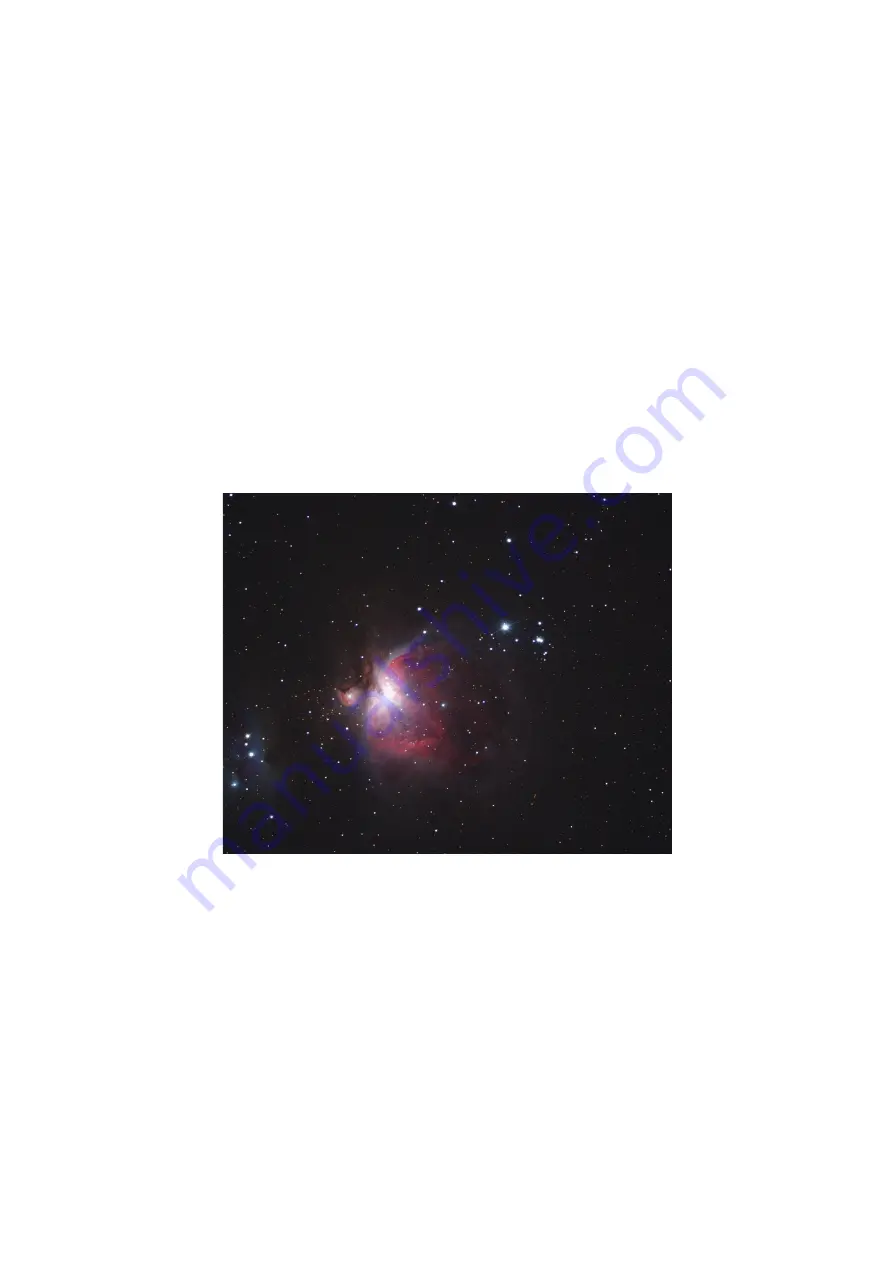
Handbook for the TRIUS PRO-825C Issue 1 September 2020
21
The resulting image will probably look faint and dull, possibly with a pale yellowish
background, due to light pollution so it is now time to process the ‘luminance’
(brightness and contrast) of the image to get the best visual appearance. First, use
the ‘Normal’ contrast stretch to darken the background by setting the ‘Black’ slider
just below the main peak of the histogram. Alternatively, you can use the ‘Remove
Background’ option to let the software decide on the best setting. This will greatly
reduce the background brightness and the image will begin to look rather more
attractive, although dark. You can now try brightening the highlights with another
‘Normal’ stretch, in which you bring down the ‘White’ slider to just above the main
image peak. The best setting for this is rather more difficult to guess and you may
need several attempts before the result is ideal. Just use the ‘Undo last filter’
function, if necessary, to correct a mistake. Normal (linear) stretches can give a nice
result on many objects, but you may find that bright areas ‘burn-out’ badly with this
function. It is often much better to use a ‘Non-linear’ stretch to compress the
brighter regions, while expanding the faint data. Here is the result of a non-linear
stretch on the M42 image:
3)
The image now looks quite impressive and I hope that you like this result from this
simple processing.
Further small refinements are usually possible and you will become expert at
judging the best way to achieve these as your experience increases. As a rough
guide, the ‘Filters’ menu can be used to sharpen, soften or noise reduce the image.
Strong ‘High Pass’ filters are usually not a good idea with deep sky images, as the
noise will be strongly increased and dark rings will appear around the stars, but a
‘Median’ filter can remove odd speckles and a mild ‘Unsharp Mask’ (Radius 3,
Power 1) will sharpen without too much increase in noise.
Other things to try, include summing several images for a better signal to noise ratio.

























